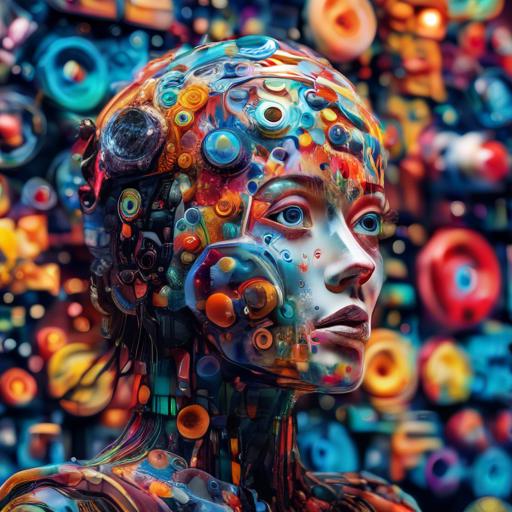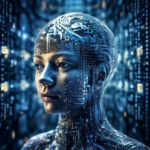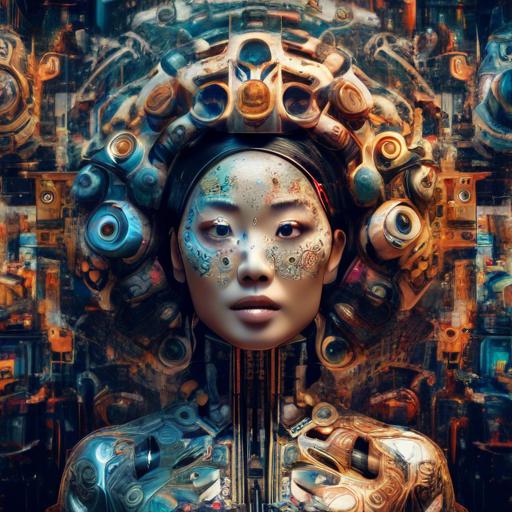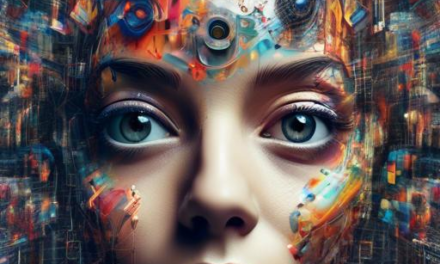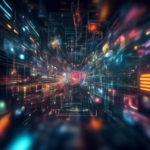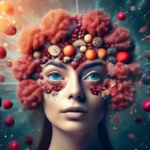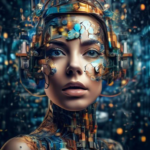In a world that grows increasingly digitized, art continues to evolve, embracing new forms and mediums. Imagine a painter with a palette that includes not just colors and brushes, but algorithms and data sets. AI art tools are at the forefront of this revolution, enabling creativity to flourish in ways we’ve never imagined. Yet, the question beckons: Who gets to wield these tools, and what voices are amplified through this technological marvel?
Our journey today delves into the heart of creating inclusive AI art tools that are not just for the tech-savvy or the privileged few. We will explore methods to ensure these instruments of creativity are accessible to everyone, celebrating diversity, breaking barriers, and challenging the norms. Let’s embark on this quest together, as we unfold the steps to foster a more inclusive landscape in the realm of AI-powered artistry. Ready your minds and your spirits, for an inclusive creative renaissance awaits.
Table of Contents
- Fostering Diversity in AI Art Algorithms
- Embracing Ethical Standards and Responsibility
- Empowering Marginalized Voices through Design
- Crafting User-Friendly Interfaces for All Abilities
- Transparently Curating Inclusive Artistic Datasets
- Promoting Collaborative Feedback and Community Engagement
- Implementing Bias Detection and Mitigation Strategies
- Insights and Conclusions
Fostering Diversity in AI Art Algorithms
Creating AI art tools that promote diversity requires a thoughtful approach to addressing biases, ensuring representation, and celebrating a multitude of cultural influences. As developers and creators, we have the responsibility to build algorithms that reflect the rich tapestry of human experience. Here are some strategies to foster inclusivity in AI art algorithms:
- Inclusive Datasets: One of the most crucial steps in developing diverse AI art tools is curating inclusive datasets. This means sourcing images, styles, and artistic expressions from various cultures, ethnicities, and time periods. Avoid over-reliance on Western-centric art to ensure a more balanced representation.
- Multilingual Training: Implementing datasets that include multiple languages can help the AI understand and generate art influenced by different lingual nuances. This broadens the AI’s palette and enables it to create art that resonates with a global audience.
In addition to the careful selection of training data, algorithmic fairness is vital. It’s essential to continuously monitor and evaluate AI models to identify and mitigate any arising biases. Employing diverse teams of developers and testers can aid in recognizing these biases, which might otherwise be overlooked. This diversity within the team can foster innovation and a more holistic approach to problem-solving.
**Transparent Ethical Guidelines:** Clear ethical guidelines should be in place to guide the development and use of AI art tools. Transparency in how data is sourced, how algorithms are trained, and how outputs are evaluated can foster trust and accountability. Developers should regularly publish reports on these guidelines and their adherence to them.
| Strategy | Benefits | Challenges |
|---|---|---|
| Curating Diverse Datasets | Balanced Representation | Finding Non-Western Data |
| Using Multilingual Inputs | Broader Cultural Influence | Complexity in Implementation |
Lastly, collaborations with artists from various backgrounds can significantly enhance the inclusiveness of AI art tools. Partnering with global artists not only helps gather diverse perspectives but also bridges the gap between technology and human creativity. By engaging in continuous dialogue with the artist community, developers can refine and innovate their tools to better serve a diverse audience.
Embracing Ethical Standards and Responsibility
Developing AI art tools that adhere to ethical standards and emphasize responsibility is paramount for fostering an inclusive creative community. To achieve this, it is essential to incorporate stringent ethical guidelines that prioritize inclusivity, transparency, and fairness in every stage of AI tool development.
Key Ethical Standards to Follow:
- Bias Mitigation: Actively identify and address biases within training datasets to ensure fairness and representation for all user demographics.
- User Privacy: Implement robust privacy measures to protect user data and foster trust among your community.
- Transparency: Clearly communicate the workings of the AI algorithms to users, ensuring they understand how their inputs affect outputs.
Moreover, an inclusive AI art tool proactively supports users with diverse needs. This involves creating accessible interfaces and providing resources in multiple languages to accommodate a global user base. Additionally, accessibility features such as screen reader compatibility, adjustable text sizes, and color contrast options can significantly enhance user experience.
| Feature | Benefit |
|---|---|
| Multi-language Support | Enhances global accessibility |
| Screen Reader Compatibility | Enables use for visually impaired users |
| Adjustable Text Sizes and Color Contrast | Improves readability for all users |
Ensuring responsible use of AI art tools goes hand in hand with ongoing education and community engagement. Providing tutorials, ethical guidelines, and regular updates keeps users informed and aligned with the tool’s values. Furthermore, creating an open feedback loop with users allows for continuous improvement of the tool, addressing any ethical concerns that arise promptly and transparently.
Empowering Marginalized Voices through Design
To effectively nurture diversity within AI art, it’s crucial to build tools that are both inclusive and mindful of varied user experiences. **Understanding the needs of marginalized communities** sets the foundation for the design philosophy. This involves engaging with these communities directly, listening to their feedback, and co-creating solutions that address their unique challenges and aspirations.

**User interface (UI)** and **user experience (UX)** design play pivotal roles in crafting accessible tools. The aim is to make the interface intuitive for everyone, including those who use assistive technologies. Key considerations include:
- **Responsive design**: Ensuring tools work seamlessly across various devices.
- **Color contrast**: Choosing color palettes that are easy to distinguish for users with visual impairments.
- **Customized controls**: Offering adjustable settings for fonts, sizes, and other visual elements.
**Cultural sensitivity** is another cornerstone. Developers should integrate multicultural datasets and collaborate with artists from diverse backgrounds to create tools that resonate broadly. This approach ensures that AI models don’t perpetuate existing biases, but rather celebrate global artistic expressions. Instituting regular **bias audits** and updating the training data continuously helps maintain this inclusive integrity.
| Consideration | Implementation |
|---|---|
| Accessibility Features | Screen readers, keyboard navigation |
| Language Support | Multilingual interfaces, localization |
| Diverse Data Sources | Inclusion of varied cultural references |
fostering an **open community** where users can share feedback and contribute ideas paves the way for continuous improvement. Feedback loops, beta testing with diverse user groups, and community forums ensure that the tools remain ground-breaking and genuinely inclusive, adapting to the evolving needs of marginalized voices.
Crafting User-Friendly Interfaces for All Abilities
Designing tools that accommodate users of all abilities is crucial in the modern era of technological innovation. To ensure your AI art tools are truly inclusive, consider incorporating a range of features and design choices that enhance usability for everyone.
One way to enhance accessibility is to prioritize **keyboard navigation**. Many users depend on the keyboard to navigate interfaces, so ensure that all functionalities can be accessed without a mouse. Utilize focus states, such as outlines or shading, to indicate which element is currently selected. Make use of tabindex to establish a logical order for navigation and avoid frustrating loops.
Another key consideration is the **visual design**. Utilize high-contrast color schemes to accommodate users with vision impairments. Implement settings that allow users to adjust text size and interface contrast. Simple, clean layouts with sufficient spacing improve readability and ease of use, creating a more welcoming environment for those with cognitive disabilities.
**Voice control and screen reader compatibility** are also essential. Optimize your tool’s interface by providing clear, descriptive labels for buttons and input fields. Use ARIA (Accessible Rich Internet Applications) roles and properties to enhance the accessibility of web content. This can enable screen readers to better interpret your interface, making voice navigation and auditory feedback more effective.
- Customizable Settings: Allow users to personalize their experience with adjustable font sizes, color schemes, and interface layouts.
- Alternative Text: Ensure that all images and icons include descriptive alt text for users relying on screen readers.
- User Feedback: Gather feedback from a diverse group of users to identify potential pain points and areas for improvement.
| Feature | Description | Benefits |
|---|---|---|
| Keyboard Navigation | All functionality accessible via keyboard | Improves accessibility for users with physical disabilities |
| High Contrast Mode | Option to switch to a high-contrast color scheme | Enhances visibility for visually impaired users |
| ARIA Roles | Implement ARIA roles for better screen reader interpretation | Supports users who rely on auditory assistance |
Transparently Curating Inclusive Artistic Datasets
Ensuring artistic datasets are inclusive is crucial for creating AI art tools that resonate with a diverse audience. One way to guarantee inclusiveness is by transparently curating the datasets. This involves thoughtful selection, conscientious curation, and regular updates to maintain relevance and representativity.
- Diverse Sources: Seek out artwork from multiple cultures, eras, and styles. This diversity not only strengthens the AI’s creative capabilities but also promotes a broader understanding of global art histories.
- Community Engagement: Inviting artists, scholars, and community members to contribute and review datasets ensures a comprehensive and inclusive collection. Crowd-sourcing can also provide unique insights and underrepresented perspectives.
- Inclusive Representation: Ensure that the datasets feature works from marginalized groups, including BIPOC, LGBTQ+, and differently-abled artists. Inclusion isn’t just a box to check; it’s about meaningful engagement and representation in the dataset.
Transparency in dataset curation can boost trust and efficacy. Regularly publishing curation criteria and process updates helps maintain accountability. Adopting an open-source approach, where the dataset and methodologies are accessible, furthers this goal. Not only does it allow for public scrutiny, but it also invites contributions that can enhance the dataset quality.
| Key Elements | Strategy |
|---|---|
| Diverse Artwork | Leverage global art repositories |
| Community Engagement | Host workshops and forums |
| Transparency | Publish curation methodologies |
| Regular Updates | Quarterly dataset reviews |
Additionally, employing ethical AI practices during dataset curation is fundamental. Ensuring no bias is embedded in the selection process can prevent the perpetuation of stereotypes. Tools like bias detection algorithms and peer reviews are instrumental in achieving this.
By maintaining transparency and ethical standards, we pave the way for AI art tools that not only reflect the diversity of human creativity but also foster a more inclusive digital landscape. Let’s make sure every brushstroke and pixel is a testament to the richness and diversity of human expression.
Promoting Collaborative Feedback and Community Engagement
To foster a spirit of shared growth and idea exchange, it’s essential to build platforms where users feel empowered to contribute their thoughts. Encourage the creation of a vibrant community where every voice matters by designing forums or chat groups that are easily accessible. Incorporate user-friendly feedback mechanisms such as thumbs up/down votes, comment sections, and **real-time discussion threads**.
- Open Dialogues: Host regular webinars or live Q&A sessions where users and developers can interact directly.
- Inclusive Surveys: Periodically send out surveys with inclusive language to gather a wide range of perspectives.
- Diverse Moderators: Appoint community moderators from various backgrounds to ensure fair representation.
Incorporating community-driven feedback loops is vital. When designing AI art tools, ensure your beta testing phase includes a diverse group of users. This demographic diversity ensures that the tool respects and uplifts multiple art forms and cultural expressions. Consider the following practical steps:
| Step | Action |
|---|---|
| Select Beta Testers | Engage a wide range of artists, from professionals to hobbyists, covering different cultural backgrounds. |
| Gather Feedback | Use structured forms or feedback tools to collect user input on functionality and inclusiveness. |
| Iterate Design | Prioritize changes based on feedback to enhance accessibility and inclusivity. |
To maintain active community engagement, consider gamifying the feedback process. Rewarding users for their constructive contributions can significantly enhance participation rates. Establish a point system where users earn badges or exclusive content based on their level of involvement. This not only motivates users to share their insights but also builds a sense of ownership and pride in the tool’s development.
- Badges & Rewards: Acknowledge top contributors with digital badges and shout-outs.
- Exclusive Access: Provide dedicated community members with early access to new features or workshops.
- Highlight Success Stories: Share user-generated success stories and showcase their work on the platform.
Implementing Bias Detection and Mitigation Strategies
Detecting and mitigating bias in AI art tools is not just a technical requirement, but a moral imperative. **Unconscious bias** in AI models can lead to the exclusion of various artists and communities, limiting the diversity and reach of creative expressions. Here are practical steps and strategies to ensure your AI art tools are inclusive and fair.
**Data Collection:**
- Gather diverse datasets that represent various cultures, art styles, and perspectives.
- Work with communities to ensure the data includes marginalized voices and lesser-known art forms.
- Regularly update the dataset to reflect new trends and emerging artistic expressions.
**Bias Detection:**
- Utilize **Fairness Indicators** to evaluate the performance of your AI models across different demographics.
- Implement **evaluation metrics** that specifically measure biases, such as disparate impact and equal opportunity.
- Develop **visualization tools** to highlight any detected biases, enabling easier identification and rectification.
**Mitigation Tactics:**
- **Rebalance the dataset** by adding more samples from underrepresented groups.
- **Implement algorithmic fairness techniques**, such as re-weighting or adversarial debiasing.
- **Trial and measure** different bias mitigation strategies to determine what works best for your AI tool.
Below is a simple comparison of common bias mitigation techniques:
| Technique | Description | Usage |
|---|---|---|
| Re-weighting | Adjusts weights of samples to balance demographics | High |
| Adversarial Debiasing | Uses adversarial training to reduce bias | Moderate |
| Data Augmentation | Adds synthetic data from underrepresented groups | Low |
By implementing these strategies, not only do we move toward more inclusive AI art tools, but we also pave the way for a richer tapestry of global artistic contributions. **Remember, inclusivity in AI** is an ongoing journey, requiring regular assessments and updates to ensure fair and representative user experiences.
Insights and Conclusions
the journey towards creating inclusive AI art tools is an ongoing process that requires empathy, creativity, and collaboration. By prioritizing diversity and accessibility in our design approach, we can empower artists of all backgrounds to express themselves and push the boundaries of artistic innovation. Let’s work together to build a future where AI art tools are not just inclusive, but truly transformative for all. We invite you to join us on this exciting adventure and together, let’s create a more inclusive and vibrant world of art.

